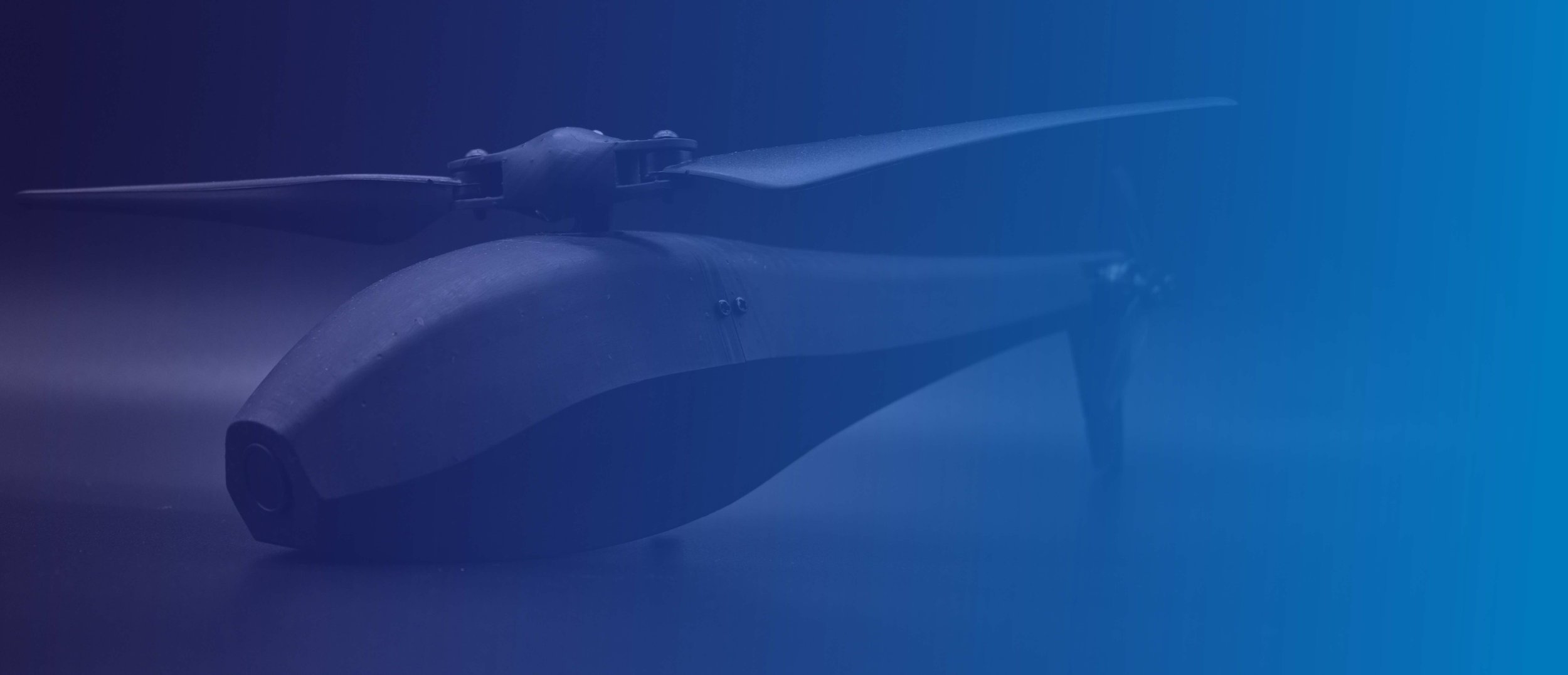
UPF-23-12
Product Description:
The UPF-23-12 is a 12-inch underactuated propeller with flapping hinges designed for industrial sUAS applications. The propeller consists of a hub with a 45 degree hinge through the center of mass and two blades attached to the hub via flapping hinges. The UPF-23-12 pairs with Vertiq’s 23-06 2200Kv Module or 23-14 920Kv Module with pulsing firmware. During operation, the propeller produces thrust, as well as roll and pitch torques, enabling entirely new aerial vehicle designs.
Propeller Details
UPF-23-12
-
Diameter: 304.8 mm
Pitch: 101.6 mm
Mass: 32.6 g
Pairs With: Vertiq 23-06 2200Kv or 23-14 920Kv Module with Pulsing Firmware
-
3 degrees of freedom with one actuator
Generate thrust and vector torque in 2 axes
Increase hover efficiency
-
-
Motor Default Settings (coming soon)
Please Go to The Module’s Page for Pulsing Firmware Downloads
Frequently Asked Questions
-
The underactuated propeller consists of a 45 degree hinge in the hub of the propeller and flapping hinges at the blades. It is connected to a Vertiq module, which consists of an integrated motor, ESC, and position sensor.
The underactuated propeller is a variable-pitch propeller, and its blade pitch is coupled with its lead/lag position. When the motor accelerates, the propeller hinges (about the hub hinge) into a lag position; when the motor decelerates, the propeller hinges into a lead position; and when the propeller spins at a constant speed, the propeller returns to a neutral position. The change in blade pitch creates torques and forces that control the vehicle.
While the hub hinge is used for propeller pitch control, the flapping hinges are designed to absorb vibration and vector thrust.
-
Vertiq’s pulsing firmware does the math for you! Our ESC translates standard flight controller commands into a drive voltage and applies a sinusoidal pulse (oscillating voltage) on top of the drive signal. The frequency, amplitude, and phase of the oscillating voltage allows us to accelerate and decelerate the motor at specific points throughout the motor’s rotation. This, in turn, makes the propeller hinge into a lead or lag position, creating a coherent torque and/or force in the desired direction.
-
To control the motor we are using something we call the IQUART flight controller interface (IFCI). A throttle, X, and Y signal is sent. Additionally a telemetry request can be sent.
-
Yes, please follow the link for the manual.
-
By creating thrust, as well as forces/torques to control roll and pitch, the underactuated propeller effectively replaces additional motors and swashplates. An underactuated motor and propeller gives you 3 degrees of freedom (DOF). Quadrotors fly with 4 DOF, using 4 motors and propellers to control thrust, roll, pitch, and yaw. You only need 1 underactuated motor and propeller and 1 standard motor and propeller to achieve the same degrees of freedom. Similarly, helicopters use a swashplate mechanism, which is a series of motors and complex linkages, to control blade pitch. The underactuated solution is a simpler, lighter replacement for a swashplate, eliminating the additional motors and complexities.
-
The hub of the propeller is mounted to the motor using 4 M2 screws.
-
The 23-06 2200Kv and 23-14 920Kv modules, which pair with the UPF-23-12, only have 2 input pins available, making IQUART the only control protocol available for the pulsing functionality. When we release larger propellers for larger modules, there will be more inputs available, allowing for communication via DroneCAN.
-
While there are various vehicles that can be built around the UPF-23-12, we designed the propeller to optimize flight time and payload capacity for a 250g vehicle. The specific vehicle in mind was a 2-motor helicopter that could replace a quadrotor with an equivalent total propeller disc area, increasing flight time by 30% and payload capacity by up to 6x. Other possible vehicles include 6 DOF quadrotors, coaxial vehicles, tailsitters, and more!
-
We are developing new propellers, but the UPF-23-12 is the only one available for purchase at this time.
-
Flapping: The UPF-23-12 is a flapping propeller. It has the main hub hinge and two flap hinges at its blades. The flapping version vectors both forces and torques. If you move the flapping hinges closer together, you vector relatively more force and less torque (until you reach the center, at which point it becomes a teeter hinge and only creates force). If you move the flapping hinges away from each other, you vector relatively more torque and less force (until the flapping hinges are so far away that they are beyond the tip of the propeller, at which point it becomes the rigid version and only generates torques on the vehicle).
Teeter: A teetering underactuated propeller has the main hub hinge and a single teeter hinge between the blades.
Rigid: A rigid underactuated propeller just has the main hub hinge. This version only creates torques on the vehicle.


